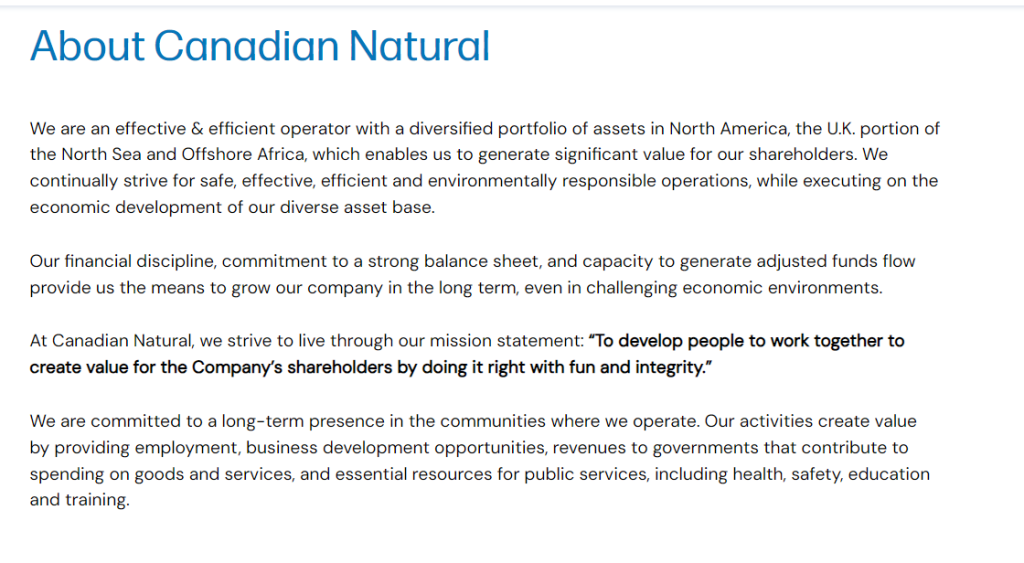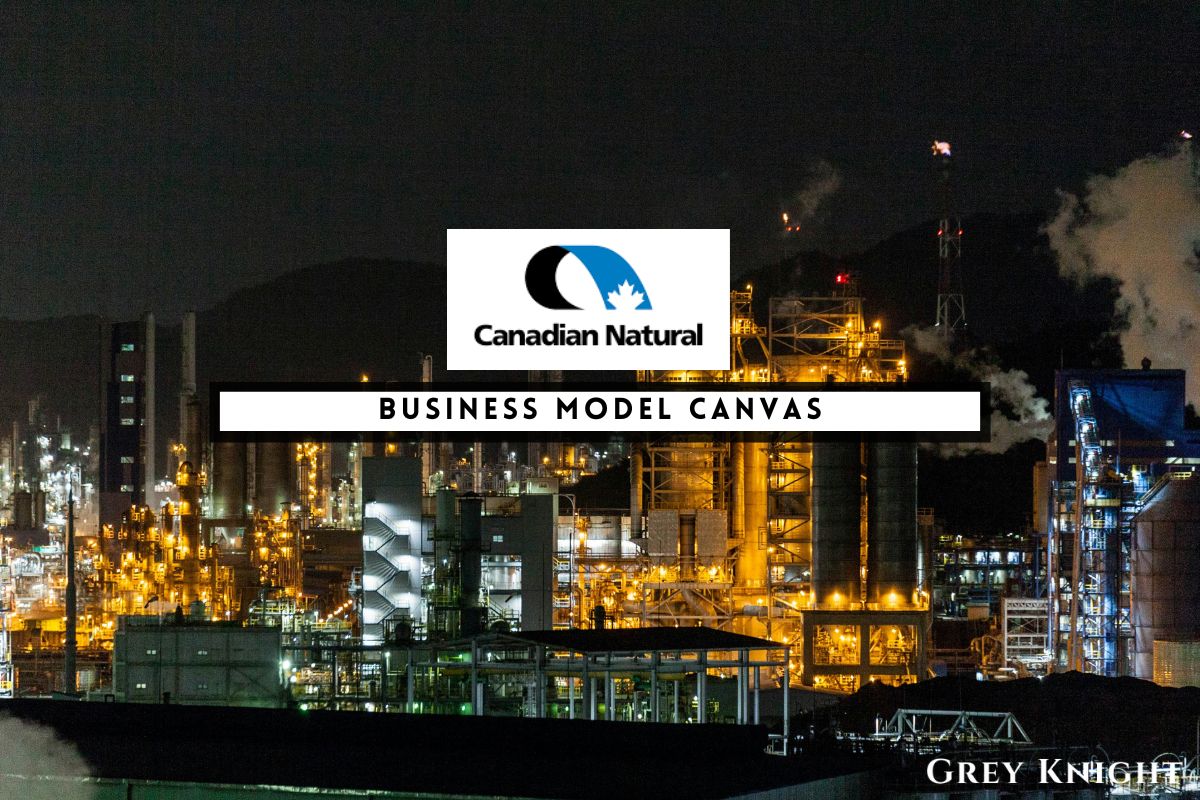Table of Contents
ToggleA Brief History of CNRL
Canadian Natural Resources Limited (CNRL) was established in 1973 by entrepreneur Murray Edwards in Calgary, Alberta. The company initially focused on natural gas and oil production in Western Canada but quickly expanded its operations to include exploration, development, and production of natural gas, crude oil, and natural gas liquids across North America and internationally.
In the 1980s, CNRL continued to expand its reach by acquiring several oil and gas companies and growing its production capacity and reserves. In the 1990s, the company further diversified its portfolio by investing in oil sands and offshore operations, solidifying its position as a major player in the energy industry.
In the early 2000s, CNRL made significant acquisitions, including the purchase of oil sands assets in Alberta and Saskatchewan, and expanded its international operations in the North Sea and Africa. The company also invested in renewable energy projects, such as wind and solar power.
Over the years, CNRL has become known for its technological innovation and commitment to environmental responsibility, implementing initiatives to reduce its carbon footprint and water usage. The company has also prioritized community engagement and sustainability in its operations.
Today, Canadian Natural Resources Limited is one of the largest independent crude oil and natural gas producers in the world, with a strong presence in Canada, the United Kingdom, and Africa. The company continues to be a leader in the energy sector, with a focus on sustainable development and responsible resource stewardship.
Who Owns CNRL?
Canadian Natural Resources Limited is a publicly-traded company, meaning that ownership is spread across a large number of shareholders. The company is based in Calgary, Alberta, and is engaged in the exploration, development, and production of crude oil and natural gas. As of the most recent available information, the top 10 shareholders of Canadian Natural Resources Limited are institutional investors such as Capital Group Companies, The Vanguard Group, and BlackRock, as well as individual investors who hold significant stakes in the company. This diversified ownership structure reflects the widespread interest in Canadian Natural Resources Limited and its activities within the energy industry.
CNRL Mission Statement
Canadian Natural Resources Limited’s mission is to responsibly develop and maximize the value of natural resources in a safe, environmentally friendly, and sustainable manner. The company is committed to providing reliable and cost-effective energy solutions while minimizing its environmental impact and investing in the communities in which it operates. Canadian Natural Resources Limited aims to achieve operational excellence and long-term success through efficient and innovative practices while maintaining a strong commitment to corporate responsibility and ethical business practices.

How CNRL Makes Money?
Canadian Natural Resources Limited (CNRL) operates under a business model that involves the exploration, development, production, and marketing of crude oil, natural gas, and natural gas liquids. The company makes money by generating revenue from the sale of its oil and gas products to various customers, including refineries, industrial users, and other producers. Additionally, CNRL also earns income from its marketing and midstream businesses, which involve the transportation, storage, and marketing of its oil and gas products. Overall, CNRL’s revenue stream is primarily derived from the production and sale of oil, natural gas, and natural gas liquids, as well as from its integrated marketing and midstream operations.
CNRL Business Model Canvas
The Business Model Canvas is a strategic management tool that provides a visual overview of a company’s business activities. It is a framework that helps organizations to understand, analyze, and optimize their business model. It consists of nine key elements, including Customer Segments, Value Propositions, Channels, Customer Relationships, Revenue Streams, Key Resources, Key Activities, Key Partners, and Cost Structure.
Customer Segments:
– Canadian Natural Resources Limited primarily targets the oil and gas industry, including exploration, production, and marketing.
– The company also caters to various customer segments such as government agencies, investors, and local communities.
Value Propositions:
– CNRL’s value propositions include high-quality and efficient oil and gas exploration, development, and production processes.
– The company offers cost-effective and sustainable energy solutions, focusing on environmental responsibility and safety.
Channels:
– CNRL uses various distribution channels, including direct sales, partnerships with distributors, and digital platforms, to reach its customers.
– The company also utilizes online platforms and social media to engage with stakeholders and promote its products and services.
Customer Relationships:
– CNRL focuses on building long-term relationships with its customers by providing reliable and consistent oil and gas products.
– The company places a strong emphasis on communication, customer feedback, and after-sales service to maintain good customer relationships.
Revenue Streams:
– CNRL generates revenue from the sale of crude oil, natural gas, and natural gas liquids.
– The company also earns income from royalties, licensing fees, and other related services in the oil and gas industry.
Key Resources:
– CNRL’s key resources include oil and gas reserves, drilling rigs, production facilities, and a skilled workforce.
– The company also relies on technological resources, strategic partnerships, and financial resources to support its operations.
Key Activities:
– CNRL’s key activities revolve around the exploration, development, and production of oil and gas resources.
– The company also engages in environmental stewardship, regulatory compliance, and community engagement as part of its key activities.
Key Partners:
– CNRL partners with equipment suppliers, contractors, and service providers to support its operations.
– The company also collaborates with government agencies, industry associations, and local communities to achieve its business objectives.
Cost Structure:
– CNRL’s cost structure includes expenses related to exploration, production, facility operations, and maintenance.
– The company incurs costs for employee wages, health and safety measures, regulatory compliance, and environmental initiatives.
CNRL’s Competitors
Canadian Natural Resources Limited faces competition from other oil and gas companies in the Canadian market. Some of its top competitors include:
1. Suncor Energy Inc.
2. Imperial Oil Ltd.
3. Cenovus Energy Inc.
4. Husky Energy Inc.
5. Enbridge Inc.
CNRL SWOT Analysis
Strengths:
1. Diversified portfolio of oil and gas assets
2. Strong financial performance and stable cash flow
3. Established presence in the oil sands industry
4. Strong track record of successful project execution
Weaknesses:
1. Dependence on commodity prices
2. Limited geographic diversification
3. High capital expenditure and operating costs
4. Environmental and regulatory challenges in the oil sands industry
Opportunities:
1. Expansion into new markets and regions
2. Growth potential in natural gas and renewable energy sectors
3. Strategic partnerships and acquisitions for portfolio diversification
4. Leveraging technology for efficiency and cost reduction
Threats:
1. Volatility in oil and gas prices
2. Regulatory and political uncertainties
3. Environmental and climate change concerns
4. Competition from other energy sources and alternative fuels
Concluding Analysis
In my analysis of Canadian Natural Resources Limited, I am optimistic about the future of the business. The company’s strong focus on responsible and sustainable resource development, along with its diversified portfolio and long-term strategic plans, positions it well for success in the ever-evolving energy market. Additionally, with a commitment to innovation and technological advancements, Canadian Natural Resources Limited is well-equipped to adapt to changes and continue thriving in the years to come. Overall, I see great potential for growth and continued success for this business in the future.
Additional Resources
To keep learning and advancing your career, we highly recommend these additional resources:
Business Model Canvas of The Top 1,000 Largest Companies by Market Cap in 2024
A List of 1000 Venture Capital Firms & Investors with LinkedIn Profiles
Peter Thiel and the 16 Unicorns: The Legacy of Thiel Fellowship












